Research Projects
Driving Simulation |
|
 |
Driving Simulation is a widespread tool to analyze vehicle dynamics and evaluate control algorithms. The simulation of the vehicles surrounding is a major requirement for an increase in automation. Here, physical approaches are used such as potential fields to represent obstacles and the road. This is utilized to derive simple control mechanism for autonomous vehicle control. Today, the driver is still in charge of a vehicle and therefore in the focus of interest when it comes to prediction of driver intention. Information about an upcoming maneuver by the driver is highly valuable for the development of Advanced Driver Assistance Systems (ADAS). Naturalistic driving analysis give an understanding of driver’s behavior. Stochastically modeling with Hidden Markov Models (HMM) or mathematical models lead to predictive approaches to determine the driver’s intention to change lanes or turn at intersections. This is a key requirement for automated vehicles to be used in today’s traffic environment. |
Stochastic Optimization |
|
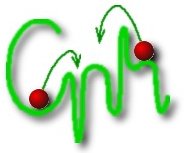 |
Stochastic optimization procedures try to provide solutions to optimization problems which have many local minima in their objective function. For these optimization problems the usual steepest descent algorithms fail as they get easily caught in local minima. For such problems stochastic optimization procedures and especially simulated annealing have been used with growing success -- not to determine the global minimum but to provide "good" solutions with values of the objective which are not too "far" apart from the desired global minimum. Simulated annealing is based on the idea of a controlled thermal relaxation dynamic in the state of the system, where the objective function to be minimized is the energy. Not surprisingly, it turns out that the concept of an energy landscape is particularly helpful in describing the thermal relaxation dynamics which leads to a solution of the underlying optimization problem. We investigate the controlled optimization dynamics on energy landscapes using tools from mathematics and from theoretical physics. Typical methods employed are the theory of Markov processes as well as simulation techniques. |
Irreversible Thermodynamics |
|
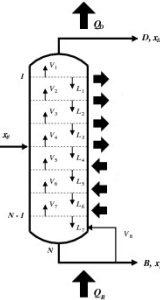 |
Since its early stages as a science thermodynamics provides bounds and limits for processes exchanging work and heat. Usually these limits are obtained from the study of reversible processes. Irreversibilities due to finite time or finite process rates are neglected and processes are effectively treated as if they would proceed without loss and at infinite slow speed. However, this contradicts the dynamics of the world we are living in. Although the performance limits of reversible processes provide upper bounds for real, irreversible processes, they may not be guides useful enough for the evaluation of real processes. Existing heat engines, for example, seldom attain more than a fraction of the reversible Carnot efficiency. A number of approaches - Finite-Time Thermodynamics and Endoreversible Thermodynamics - have been developed to overcome that shortcoming and to provide better limits and bounds. Are there theoretical bounds for the performance of thermodynamic processes under the constraints of finite process times or rates? If such bounds exist, what are the optimal operating conditions necessary to reach these bounds? This kind of questions is indeed important for the future development of technologies and has thus inspired researchers to conduct a wide range of scientific inquiries leading to new non-equilibrium theories in thermodynamics. A variety of novel theoretical techniques have been developed to model the performance of for instance automobile engines, refrigerators, heat pumps, chemical processes and solar cells. The aim of these investigations is to identify the main thermodynamic features of the system in order to make a model as simple as possible. The idea is to reduce the mathematical description and computational effort and yet to find more realistic optima and bounds for the operation of a thermodynamical system. The concept of `endoreversibility' has proven to be a powerful tool for the construction of models with the desired qualities. Endoreversible systems basically are composed of internally reversible subsystems with (irreversible) interactions between them. The losses due to the finite times or rates of processes are located in the interactions alone. The hypothesis of endoreversibility simplifies the expenditure for the analysis essentially. Nontheless a general theory describing the non-equilibrium flows of energy, matter and other extensities between systems and its accompanying entropy production remains an open challenge. |
Complex Systems |
|
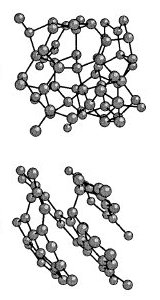 |
Many physical systems are characterized by their relaxation behavior. For such systems the concept of energy “landscapes” leads to a unified understanding of variety of different phenomena. All these systems are characterized by an energy function which possesses many local minima separated by barriers. An often-used picture for complex state spaces is that of a mountainous landscape, where the heights of the mountains represent the energy and the two horizontal axis have to mimic two of the many dimensions of the physical system. Typical examples of such complex systems are spin glasses, which show a wealth of interesting relaxation phenomena, cluster of molecules with their thermal relaxation behavior, or proteins with their folding dynamics. In such systems slow relaxation dynamics is intimately connected to metastable states, which are due to the many local minima in their energy function. An escape from those minima over the surrounding barriers can take a very long time. Such systems do not reach their thermal equilibrium easily. Studying the dynamics of complex systems is confronted with a major problem: the enormous number of states. This number can be reduced considerably by coarse graining the state space. Often the resulting structure has a tree topology. The result is that Marcov processes on tree structures are good modeling tools for the thermal relaxation of complex systems. While in the systems described above the relaxation behavior is due to the crossing of energy barriers, there are also entropic and kinetic effects due to the state space topology which as well lead to a slowed down relaxation. Such topological barriers also exist in the anomalous diffusion observed for instance in porous media. Here the spatial features of the pores have a decisive effect on the particle movement. A good model system to study the observed features are fractal structures which capture the self-similarity of natural materials as well as of other complex state spaces. |
Modeling Structure Formation |
|
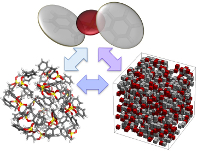 |
Developing new materials for further applications it is decisive to understand the structure formation processes of the unterlying chemical reaction mechanism as well as the influence factors on the resulting morphology in detail. Hereby, we are especially interested in the structure formation process of twin polymerization, which is an effective synthesis method to fabricate nanoporous hybrid materials with defined domaines in the range of 0.5 to 3 nm. To investigate and to get insights into the structure formation process of twin polymerization on different levels of detail, we develop and extent various modeling approaches. Amongst others, we utilize coarse grained lattice based Monte Carlo models to analyze the dynamical behavior occuring during the reaction process. We analyze the reaction kinetics to characterize thermodynamical properties to the reaction mechanism and we apply reactive molecular dynamics simulations to investigate the twin polymerization on the atomic length scale. |
Former Research Projects
Gas Dynamics |
|
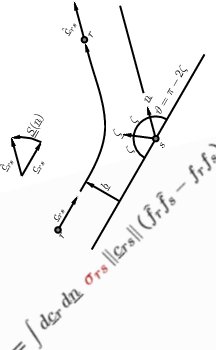 |
For the most technical processes, the motion of fluids is well described by continuum models, such as the Navier-Stokes equations. This is the case because under those common macroscopic conditions the fluid particles interact much more often among each other than with the surfaces, interfaces and boundaries of the fluid. If this situation changes, e.g. because the mean free path of the particles becomes very large or because characteristic flow lengths become very small, classical continuum models make wrong predictions of the flow fields. These rarefied flows are well described by the Boltzmann equation. Numerical methods to solve this integro-differential equation are well known for some time now. In the transition regime, however, where we have a flow situation where a description by the Navier-Stokes equations does not suffice but a description by the full Boltzmann equation does not seem adequate, there is a gap in our ability to make theoretical predictions of flow conditions based on numerical simulations. This is because the well-understood continuum models do not hold any longer, but solution of the Boltzmann equation requires too expensive numerical effort. The rarefied regime, however plays an important role e.g. in the development of Microscopic Electro-Mechanical Systems where flow conditions can change between the continuum regime and the rarefied regime, like for read/write heads of hard disk drives.
Our research aims at theoretical descriptions and numerical methods that could be used to implement methods that not only allow for adaptation of the numerical solver to the flow fields, but eventually also to adapt the details of the physical model to the particular flow regime. |
